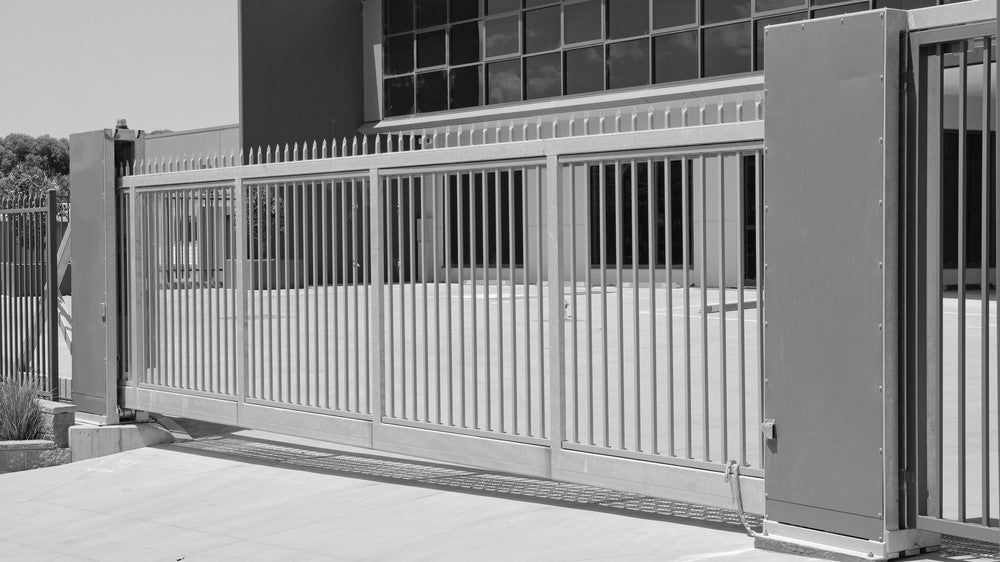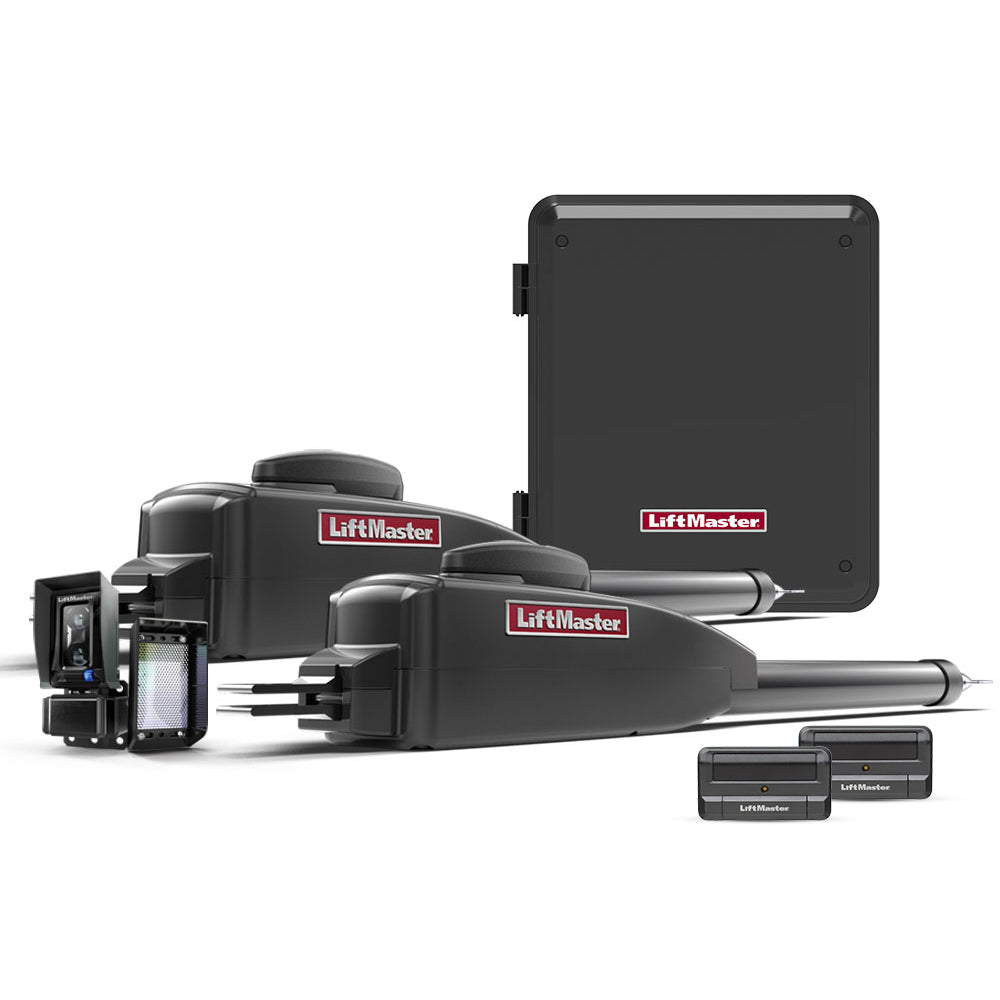The basics of a sliding gate operator essentially cut across all kits. The gate opens and closes along a track or guide rollers that run across a wall, fence, hedge or other perimeter. A motor meshes with the gate’s toothed rack and pushes it open or closed as it rotates.
The difference between kits is in their safety mechanisms and power output. There are so many options out there that it may be overwhelming to pick a sliding gate kit that is perfect for your installation. The key considerations revolve around the gate size and the operation's expected intensity.
What to Consider When Choosing a Sliding Gate Kit
The Width of the Gate
The width of the driveway gate represents the distance it needs to travel when opening and closing. Driveway gate motors usually have a maximum width rating that the manufacturer specifies.
If the exact width of your gate is not among the options you have, you should go for the nearest higher rating, as it is better to err on the side of caution, especially if you are dealing with a tight space.
Some sliding gates have overhangs which should not be included when measuring their width. The rating is only applicable to the distance of travel from the gate.
The Total Weight of the Gate
While this may not be as impactful to kit selection as the width, some kits are designed for heavy lifting, especially for large industrial and commercial gates, while others are meant for light domestic work. A good number of gate operator options don’t have specified weight limits, but for those that do, you shouldn’t overload them.
The weight of the gate frame is influenced by its size, construction, and material from which it is made. The bigger it is, the heavier you expect it to be. Palisade gates are lighter than solid gates regardless of the material, and the weight of a metal gate will depend on the grade of metal and, if it is composite, on the combination of metals.
Owing to the number of variables, the only way to really know the weight of your gate is from the manufacturer’s listing. To be on the safe side, you should go for a gate motor rated higher than your gate’s minimum requirement.
The Anticipated Foot Traffic Per Day
Sliding gate kits are also rated according to the level of activity they can handle. A residential driveway kit has lower demands than a commercial premises kit. There are four broad categories we can use to illustrate the difference
- Residential Sliding Gate Kit
These are designed for the gate opening of a standard driveway size used by a normal family or household. They are generally light gates that don’t need much power and speed.
- Sliding Gate Kit for Multi Resident Properties
These gates have a higher daily vehicle access requirement than residential gates but operate the same type of gate in terms of weight and size. However, they need faster cycle speeds because they are used by more people and have a higher footfall ratio.
These gates are suitable for shared driveways, small office car parks or small apartment block entrances.
- Sliding Gate Kit for Light Commercial Use
Because of the larger vehicles involved, these entrances are typically larger than residential properties and with more intensive usage. They need a fast cycle gate motor to satisfy the frequent demand. These gates are ideal for small industrial premises and larger car parks.
- Sliding Gate Kit for Commercial Use
These kits are made for heavy-duty intensive operation. They can move heavy gates, which require frequent access for all types of vehicles in industrial units.
The Lay of the Ground
If the ground is sloping, uneven, or graveled, your regular sliding gate will not be applicable. Running a sliding gate up or down a slope isn't safe. The motor might be overwhelmed by the excessive forces, and if it releases the gate, it might result in fatalities or serious injury to anyone in its path.
Your best bet, in this case, will be to install a suspended gate that hovers over the slope or uneven ground. Keep in mind you won’t be in a position to install straight track wheels or guide rollers on the ground.
Cycling Speed
You need speed and automation if your premises are on a busy road with limited space to pull over while the gates open. You also need the gates to be fast if you successfully employ deterrent measures like anti-tailgating.
You will require a high-grade motor with a fast cycle speed for constant rapid access.
Additional Safety Measures
Some kits will have extra bells and whistles that are useful in daily operations at no extra cost. A good example is devices that can monitor entrapment zones like added photocells, safety edges and other monitored edge solutions. They enable your gate to self-regulate, ensuring it doesn’t cause unintentional harm. Some sliding gate kit options may even come with obstacle detection and protection against electric strikes.
A professional installer will be able to assess the layout of your premises and advise you on your security needs based on the sliding gate kit and gate design you choose. You can tell if all the extras are worth it.
How Will You Power the Gate?
Sliding gates are either powered from the mains power or using solar power. You need to know where to terminate the system to determine the right kit. You may need to dig up your entrance to lay the service cables, which comes at a cost.
If you plan to enable solar power, you should ensure the kit you choose is compatible with the solar power kit. You may have to forego some devices like intercoms, keypads and lights for solar power as their energy demands can be excessive for a solar-powered system.
Secure Your Property with a Sliding Gate
A sliding gate kit is a great way to secure your property. There are many different types of kits available, so it is important to do your research and choose the one that is right for you. If you have any questions, our team of experts would be happy to help you find the perfect solution for your needs. Contact us today!












